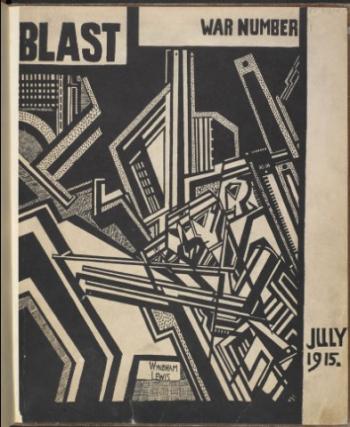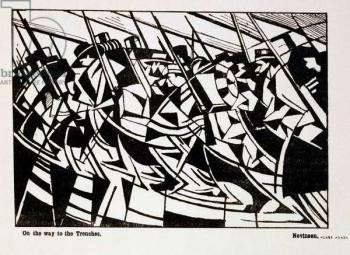Vorticism
Vorticism was a wholly British movement which developed out of the short-lived Rebel Art Centre – the breakaway group led by Wyndham Lewis that seceded from the Omega Workshops – just prior to the outbreak of World War I. The British movement was in effect an off-shoot of the Italian Futurist movement and was noted for its blend of energetic line and geometrical form, reflecting the harshness and energy of the machine age as opposed to the sentimentality and romanticism that had gone before. In addition to artists such as Edward Wadsworth, the movement included among its adherents the sculptors Jacob Epstein and Gaudier-Brzeska, the poet and critic Thomas Ernest Hulme, poet Ezra Pound, and the novelist Ford Madox Ford. It was Ezra Pound who coined the name Vorticism, seeing the movement as a 'vortex' from whose centre ideas were constantly twisting.
The group's magazine Blast was first produced in July 1914 and contained the Vorticist Manifesto written by associates, including David Bomberg who, with Etchells, Epstein and Hulme, refused to add his signature to it. The outbreak of war the following month soon brought about a temporary halt to developments within all the Modernist movements and although the Vorticists put together the only exhibition of their work in Britain at the Doré Gallery in 1915. The movement did not survive the war.
Get Unlimited Access from just £5



